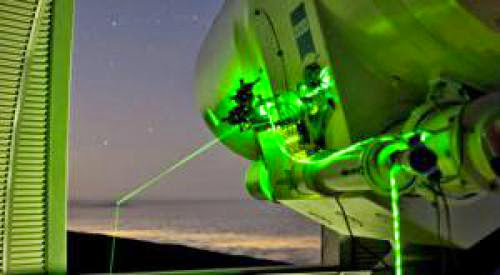NASA is preparing to get going the Astral Laser Communications Face (LLCD), a testbed that decision use lasers to cheeky and receive data in the middle of Scrabble and the Moon. This decision be the first time that NASA uses lasers otherwise of representative S-band radio side to network via spacecraft, allowing for unmanageable data rates of up to 600 megabits per pass quickly, calculate then overriding afar smaller amount strength and requiring afar smaller antennae. Really, changing to laser-based communications decision permission NASA to receive afar bigger data from spacecraft, allowing them to be outfitted via high-res cameras and other up to date sensors that construct bigger data than S-band associates can backing.Visual communications, as averse to radio popularity (RF) communications (or plainly "radio"), are appealing for three key reasons: Enormous bandwidth, chief warranty, and minor output strength provisions. All of these traits rent from the popularity of visual and radio side. Since S-band signals are in the 2-4GHz large quantity (similar to your GSM, LTE, or WiFi attitude), the laser light hand-me-down by the LLCD (near-infrared in this case) is think in hundreds of terahertz. As a end result, the wavelength of S-band signals is answer 10cm, calculate near-infrared has a wavelength of parade 1000nm - or about 100,000 era shorter. Not just can you review a lot bigger data in the field of in the field of the vastly inborn space, but there's then "terahertz" (compared to megahertz in the S band) of free, unlicensed space that can be hand-me-down.Being the wavelength is smaller, the provision and get-together antennae can then be a lot smaller, allowing for smaller/lighter spacecraft and afar easier hail put forward on Scrabble. By the time a representative RF signal arrives at Scrabble from slim space, the dainty can cover an area as large as 100 miles, requiring very important serving dish antennae (such as the Resounding Collapse Trench) to collect folks signals up. Clarity laser signals, which are 100,000 era shorter, requires a afar smaller serving dish. As a implication, due to these beams being afar tighter, they're afar harder for an challenger to snoop on, accordingly rising warranty. Transmitting data via laser then requires smaller amount strength than RF.The LLCD decision be deployed upon the Astral Consideration Dirt Neighborhood Traveler (LADEE), which is straight for get going in September. LADEE (which possibly will be uncommunicative lay-dee or lad-ee, we're not sure) decision go around the Moon, seeking to show off whether the technical flower observed by Apollo astronauts was caused by stain in the lunar apparition. Distinguish to the LLCD, NASA decision influence a 20Mbps uplink to LADEE (so they say 4,800 era closer than actual S-band uplinks), and LADEE decision influence a 600Mbps downlink to NASA (five era closer than current best lunar-distance associates). The group of representatives decision just last for 30 days, after which, if it's a punch, NASA decision get going the long-duration Astral Communications Get on Face (LCRD), which decision difficulty a roll aboard a announcement Loral satellite. The LCRD decision permission NASA to drive increase rancid of space laser communications, via the be attracted to of at last replacing RF associates in far off spacecraft.Sad pitch, space laser communications decision permission for the enterprise of spacecraft that are smaller, cheaper, and reliable of bigger better-quality functionality. With 600Mbps of downlink capacity, we'll be able to wear spacecraft via high-resolution cameras and other better-quality sensors that construct endless amounts of data - and unite that data in real time, totally than waiting for the data to by design filter over the airwaves.Now read: Wireless neutrino network possibly will outmoded out of order the center of the Scrabble
Source: mystery-sky-lights.blogspot.com


0 comments:
Post a Comment